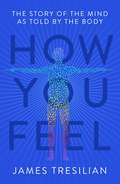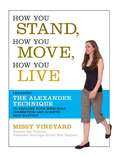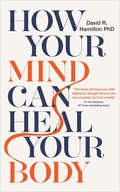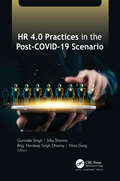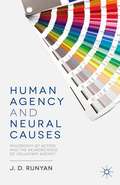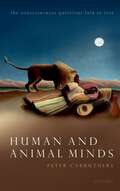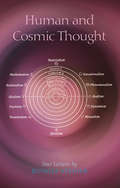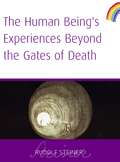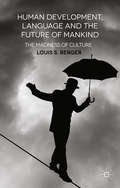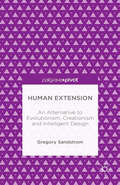- Table View
- List View
How white blood cells protect agains bacteria Diagram 4 of 5 (UEB contracted)
by Sheffield Vi ServiceThis is the fourth in a series of unlabelled diagrams showing white blood cell protecting the body against bacteria.
How white blood cells protect against bacteria Diagram 1 of 5 (UEB contracted)
by Sheffield Vi ServiceThis is the first in a series of unlabelled diagrams showing white blood cell protecting the body against bacteria.
How white blood cells protect against bacteria Diagram 2 of 5 (UEB contracted)
by Sheffield Vi ServiceThis is the second in a series of unlabelled diagrams showing white blood cell protecting the body against bacteria.
How white blood cells protect against bacteria Diagram 3 of 5 (UEB uncontracted)
by Sheffield Vi ServiceThis is the third in a series of unlabelled diagrams showing white blood cell protecting the body against bacteria.
How white blood cells protect against bacteria Diagram 5 of 5 (UEB contracted)
by Sheffield Vi ServiceThis is the fifth in a series of unlabelled diagrams showing white blood cell protecting the body against bacteria.
How You Feel: The Story of the Mind as Told by the Body
by James TresilianClose your eyes and ask yourself, 'what do I feel?'You might feel thirsty or tired. You might feel healthy and well or perhaps a little under the weather. Maybe you can feel that you are standing or that you are leaning over. You may also feel the world around you - the shape and texture of an apple in your hand, the feel of a chair you're sitting on.All these feelings have something in common, say psychologists and neuroscientists. They are all mental events, things that happen in the mind. But what if this is all wrong?What if it's not just the mind, but also the body itself that feels? And not merely physical sensations, but other feelings that seem to have nothing to do with bodies. Things like 'emotions' and 'intuitions' - joy or rage, anxiety or optimism, or the feeling of being hard done by or misunderstood?Drawing on the latest research and a range of classic and contemporary thought, How You Feel shows you that your brain and your body are two parts of a single system that creates your mind and mental life. You will discover that you don't have feelings, thoughts and emotions inside your body, you have them with your body. There can be no mind without the body.Psychology is no longer about the brain, or about 'mind and body', it is about the whole that is you.
How You Stand, How You Move, How You Live: Learning the Alexander Technique to Explore Your Mind-Body Connection and Achieve Self-Mastery
by Missy VineyardThe Alexander Technique (AT) is a remarkably simple but powerful method for learning to skillfully control how your brain and body interact, allowing you to better coordinate your movements while increasing the accuracy of your mind's thoughts and perceptions. Now, in How You Stand, How You Move, How You Live, leading Alexander Technique master teacher Missy Vineyard sheds a completely fresh light on this revolutionary method and, in the process, offers path-breaking insight into the mind-body connection. Vineyard thoroughly explains and teaches the central skills of the AT through simple self-experiments, and she offers engaging stories of students in their lessons to show its effective application across a range of disciplines, including the performing arts, athletics, health, psychology, and education. How You Stand, How You Move, How You Live introduces us to a world within ourselves that we know surprisingly little about--and thereby helps us to understand why we often cannot do what we should be able to do, why we harm ourselves with chronic tension and anxiety, and why our thoughts often seem beyond our control. Vineyard is also the first AT teacher to draw on cutting-edge research in neuroscience and to synthesize those findings with AT theories and techniques. She fully illuminates the benefits to be reaped by mastery of the Alexander Technique, which include: Release from acute or chronic physical pain Enhanced mental attention and focus Reduced anxiety Improved balance and coordination Relief from tension and stress Increased ease and efficiency performing precise movement skills
How You Stand, How You Move, How You Live: Learning the Alexander Technique to Explore Your Mind-Body Connection and Achieve Self-Mastery
by Missy VineyardThe Alexander Technique (AT) is a remarkably simple but powerful method for learning to skillfully control how your brain and body interact, allowing you to better coordinate your movements while increasing the accuracy of your mind's thoughts and perceptions. Now, in How You Stand, How You Move, How You Live, leading Alexander Technique master teacher Missy Vineyard sheds a completely fresh light on this revolutionary method and, in the process, offers path-breaking insight into the mind-body connection. Vineyard thoroughly explains and teaches the central skills of the AT through simple self-experiments, and she offers engaging stories of students in their lessons to show its effective application across a range of disciplines, including the performing arts, athletics, health, psychology, and education. How You Stand, How You Move, How You Live introduces us to a world within ourselves that we know surprisingly little about--and thereby helps us to understand why we often cannot do what we should be able to do, why we harm ourselves with chronic tension and anxiety, and why our thoughts often seem beyond our control. Vineyard is also the first AT teacher to draw on cutting-edge research in neuroscience and to synthesize those findings with AT theories and techniques. She fully illuminates the benefits to be reaped by mastery of the Alexander Technique, which include: Release from acute or chronic physical pain Enhanced mental attention and focus Reduced anxiety Improved balance and coordination Relief from tension and stress Increased ease and efficiency performing precise movement skills
How Your Brain Works: Inside the most complicated object in the known universe (New Scientist Instant Expert #41)
by New ScientistEver wondered what's going on inside your head?You are your brain. Everything that makes you you, and all your experiences of the world, are somehow conjured up by 1.4 kilograms of grey matter inside your skull. That might seem impossible, but science has advanced so much that we now understand not just its structures and inner workings but also how it can give rise to perception, consciousness, emotions, memories, intelligence, sleep and more. HOW YOUR BRAIN WORKS explores the amazing world inside your head. Discover the evolution and anatomy of the brain. Learn how we can peer inside it and watch it at work, and how the latest technology can allow us to control our minds and those of others. ABOUT THE SERIESNew Scientist Instant Expert books are definitive and accessible entry points to the most important subjects in science; subjects that challenge, attract debate, invite controversy and engage the most enquiring minds. Designed for curious readers who want to know how things work and why, the Instant Expert series explores the topics that really matter and their impact on individuals, society, and the planet, translating the scientific complexities around us into language that's open to everyone, and putting new ideas and discoveries into perspective and context.
How Your Mind Can Heal Your Body: 10th-Anniversary Edition
by David R. HamiltonThere is no longer any doubt that the way we think affects our bodies. For former pharmaceutical scientist Dr David Hamilton, the testing of new drugs highlighted how profoundly the mind and body are connected. Time and time again, the control group of patients in drug trials improved at similar rates to those who received the medicines. This bestselling acclaimed book was first published 10 years ago. In it, Dr Hamilton explores the effect of visualization, belief and positive thinking on the body, and shows how using our imagination and mental processes can stimulate our own defences and healing systems to combat disease, pain and illness. In this new edition, Dr Hamilton has added four new chapters to discuss the latest cutting-edge information and extraordinary new techniques. These include using imagery to stimulate the immune system - a method that can benefit cancer patients undergoing conventional treatment - effectively using the mind to speed up rehabilitation from stroke, and powerful visualization strategies to help facilitate recovery from injury and illness.
HR 4.0 Practices in the Post-COVID-19 Scenario
by Gurinder Singh Silky Sharma Brig. Hardeep Singh Dhanny Vikas GargThis new volume examines the dramatic impact of the COVID-19 pandemic and its embrace of the digital revolution on human resources management practices, providing a better understanding of the emerging role of HR 4.0 and equipping HR professionals with the knowledge they need to chart plausible future organizational directions. The book will familiarize readers with the most relevant and latest concepts of HR 4.0 practices, providing tools for solutions to complex problems in managing a multigenerational workforce in this volatile, uncertain, complex, and ambiguous (VUCA) world. The chapter authors discuss an array of topics, including the work-from-home transition, digitization of the workforce, employee work-life balance, task automation technologies via AI, HRM curriculum at schools and universities, employee development, e-recruitment, internal marketing, and more.
HR 4.0 Practices in the Post-COVID-19 Scenario
This new volume examines the dramatic impact of the COVID-19 pandemic and its embrace of the digital revolution on human resources management practices, providing a better understanding of the emerging role of HR 4.0 and equipping HR professionals with the knowledge they need to chart plausible future organizational directions. The book will familiarize readers with the most relevant and latest concepts of HR 4.0 practices, providing tools for solutions to complex problems in managing a multigenerational workforce in this volatile, uncertain, complex, and ambiguous (VUCA) world. The chapter authors discuss an array of topics, including the work-from-home transition, digitization of the workforce, employee work-life balance, task automation technologies via AI, HRM curriculum at schools and universities, employee development, e-recruitment, internal marketing, and more.
Human Agency and Neural Causes: Philosophy of Action and the Neuroscience of Voluntary Agency
by J. RunyanHuman Agency and Neural Causes provides an analysis of our everyday thought about our conduct, and the neuroscience research concerning voluntary agency. J.D. Runyan argues that our findings through neuroscience are consistent with what would be expected if we are, in fact, voluntary agents.
Human and Animal Minds: The Consciousness Questions Laid to Rest
by Peter CarruthersThe continuities between human and animal minds are increasingly well understood. This has led many people to make claims about consciousness in animals, which has often been taken to be crucial for their moral standing. Peter Carruthers argues compellingly that there is no fact of the matter to be discovered, and that the question of animal consciousness is of no scientific or ethical significance. Carruthers offers solutions to two related puzzles. The first is about the place of phenomenal—or felt—consciousness in the natural order. Consciousness is shown to comprise fine-grained nonconceptual contents that are "globally broadcast" to a wide range of cognitive systems for reasoning, decision-making, and verbal report. Moreover, the so-called "hard" problem of consciousness results merely from the distinctive first-person concepts we can use when thinking about such contents. No special non-physical properties—no so-called "qualia"—are involved. The second puzzle concerns the distribution of phenomenal consciousness across the animal kingdom. Carruthers shows that there is actually no fact of the matter, because thoughts about consciousness in other creatures require us to project our first-person concepts into their minds; but such projections fail to result in determinate truth-conditions when those minds are significantly unlike our own. This upshot, however, doesn't matter. It doesn't matter for science, because no additional property enters the world as one transitions from creatures that are definitely incapable of phenomenal consciousness to those that definitely are (namely, ourselves). And on many views it doesn't matter for ethics, either, since concern for animals can be grounded in sympathy, which requires only third-person understanding of the desires and emotions of the animals in question, rather than in first-person empathy.
Human and Animal Minds: The Consciousness Questions Laid to Rest
by Peter CarruthersThe continuities between human and animal minds are increasingly well understood. This has led many people to make claims about consciousness in animals, which has often been taken to be crucial for their moral standing. Peter Carruthers argues compellingly that there is no fact of the matter to be discovered, and that the question of animal consciousness is of no scientific or ethical significance. Carruthers offers solutions to two related puzzles. The first is about the place of phenomenal—or felt—consciousness in the natural order. Consciousness is shown to comprise fine-grained nonconceptual contents that are "globally broadcast" to a wide range of cognitive systems for reasoning, decision-making, and verbal report. Moreover, the so-called "hard" problem of consciousness results merely from the distinctive first-person concepts we can use when thinking about such contents. No special non-physical properties—no so-called "qualia"—are involved. The second puzzle concerns the distribution of phenomenal consciousness across the animal kingdom. Carruthers shows that there is actually no fact of the matter, because thoughts about consciousness in other creatures require us to project our first-person concepts into their minds; but such projections fail to result in determinate truth-conditions when those minds are significantly unlike our own. This upshot, however, doesn't matter. It doesn't matter for science, because no additional property enters the world as one transitions from creatures that are definitely incapable of phenomenal consciousness to those that definitely are (namely, ourselves). And on many views it doesn't matter for ethics, either, since concern for animals can be grounded in sympathy, which requires only third-person understanding of the desires and emotions of the animals in question, rather than in first-person empathy.
Human and Cosmic Thought
by Rudolf SteinerRudolf Steiner demonstrates that there are twelve main philosophical standpoints, and that the future of philosophy rests not upon defending one and refuting the others, but in learning to experience the validity of them all.What convinces us of the truth of a certain point of view? Why do we find it difficult to comprehend viewpoints that differ from our own? What are the inner foundations of our knowledge? In these concentrated and aphoristic lectures, Steiner speaks of twelve main philosophical standpoints, and the importance of understanding each of them. An appreciation of the variety of possible world views not only sharpens and makes more flexible our own powers of thinking, but helps us to overcome a narrow-minded one-sidedness, promoting tolerance of other people and their opinions.Steiner goes on to explain how each standpoint is also coloured by a particular ‘soul mood’, which influences the way we actively pursue knowledge. Several philosophers and their works are characterised in this manner, throwing light on their contributions to human culture. Through such insight into the true nature of human thinking, we are led to understand the quality of cosmic thought and how, in Rudolf Steiner’s words, the human being can be seen as a ‘thought which is thought by the Hierarchies of the cosmos’.
Human and Machine Consciousness
by David GamezConsciousness is widely perceived as one of the most fundamental, interesting and difficult problems of our time. However, we still know next to nothing about the relationship between consciousness and the brain and we can only speculate about the consciousness of animals and machines. Human and Machine Consciousness presents a new foundation for the scientific study of consciousness. It sets out a bold interpretation of consciousness that neutralizes the philosophical problems and explains how we can make scientific predictions about the consciousness of animals, brain-damaged patients and machines. Gamez interprets the scientific study of consciousness as a search for mathematical theories that map between measurements of consciousness and measurements of the physical world. We can use artificial intelligence to discover these theories and they could make accurate predictions about the consciousness of humans, animals and artificial systems. Human and Machine Consciousness also provides original insights into unusual conscious experiences, such as hallucinations, religious experiences and out-of-body states, and demonstrates how ‘designer’ states of consciousness could be created in the future. Gamez explains difficult concepts in a clear way that closely engages with scientific research. His punchy, concise prose is packed with vivid examples, making it suitable for the educated general reader as well as philosophers and scientists. Problems are brought to life in colourful illustrations and a helpful summary is given at the end of each chapter. The endnotes provide detailed discussions of individual points and full references to the scientific and philosophical literature.
Human and Machine Consciousness
by David GamezConsciousness is widely perceived as one of the most fundamental, interesting and difficult problems of our time. However, we still know next to nothing about the relationship between consciousness and the brain and we can only speculate about the consciousness of animals and machines. Human and Machine Consciousness presents a new foundation for the scientific study of consciousness. It sets out a bold interpretation of consciousness that neutralizes the philosophical problems and explains how we can make scientific predictions about the consciousness of animals, brain-damaged patients and machines. Gamez interprets the scientific study of consciousness as a search for mathematical theories that map between measurements of consciousness and measurements of the physical world. We can use artificial intelligence to discover these theories and they could make accurate predictions about the consciousness of humans, animals and artificial systems. Human and Machine Consciousness also provides original insights into unusual conscious experiences, such as hallucinations, religious experiences and out-of-body states, and demonstrates how ‘designer’ states of consciousness could be created in the future. Gamez explains difficult concepts in a clear way that closely engages with scientific research. His punchy, concise prose is packed with vivid examples, making it suitable for the educated general reader as well as philosophers and scientists. Problems are brought to life in colourful illustrations and a helpful summary is given at the end of each chapter. The endnotes provide detailed discussions of individual points and full references to the scientific and philosophical literature.
Human Being's Experiences Beyond The Gates of Death
by Rudolf SteinerA single lecture taken from the volume Life Beyond Death.
Human Capacities and Moral Status (Philosophy and Medicine #108)
by Russell DiSilvestroMany debates about the moral status of things—for example, debates about the natural rights of human fetuses or nonhuman animals—eventually migrate towards a discussion of the capacities of the things in question—for example, their capacities to feel pain, think, or love. Yet the move towards capacities is often controversial: if a human’s capacities are the basis of its moral status, how could a human having lesser capacities than you and I have the same "serious" moral status as you and I? This book answers this question by arguing that if something is human, it has a set of typical human capacities; that if something has a set of typical human capacities, it has serious moral status; and thus all human beings have the same sort of serious moral status as you and I. Beginning from what our common intuitions tell us about situations involving "temporary incapacitation"—where a human organism has, then loses, then regains a certain capacity—this book argues for substantive conclusions regarding human fetuses and embryos, humans in a permanent vegetative state, humans suffering from brain diseases, and humans born with genetic disorders. Since these conclusions must have some impact on our ongoing moral and political debates about the proper treatment of such humans, this book will be useful to professionals and students in philosophy, bioethics, law, medicine, and public policy.
Human Centered Robot Systems: Cognition, Interaction, Technology (Cognitive Systems Monographs #6)
by Rüdiger Dillmann Martin Buss Helge Ritter Gerhard SagererHuman Centered Robotic Systems must be able to interact with humans such that the burden of adaptation lies with the machine and not with the human. This book collates a set of prominent papers presented during a two-day conference on "Human Centered Robotic Systems" held on November 19-20, 2009, in Bielefeld University, Germany. The aim of the conference was to bring together researchers from the areas of robotics, computer science, psychology, linguistics, and biology who are all focusing on a shared goal of cognitive interaction. A survey of recent approaches, the current state-of-the-art, and possible future directions in this interdisciplinary field is presented. It provides practitioners and scientists with an up-to-date introduction to this dynamic field, with methods and solutions that are likely to significantly impact on our future lives.
Human Design Made Simple: Unlock your strengths & discover your true purpose
by Emma DunwoodyHuman Design is a system based on our time and dateof birth, and gives us the ultimate blueprint to our personality,energy and authenticity. It offers a unique insight into who weare and how to achieve our potential – in all aspects of life.With the expert guidance of Human Design master coachEmma Dunwoody, you’ll discover the transformative powerof this ingenious system and how to make it work bestfor you. In simple steps, you’ll find out:How to truly understand yourself and embrace your superpowersHow to stop questioning yourself and trust in your intuitionWhat your energy type is and how to make it work for youWays to heal from the past and step into your lightWith journal prompts, future-visioning and actionable tipson applying your new self-knowledge, Human DesignMade Simple is your personalised toolkit to take your lifein the direction you want to go.
Human Development, Language and the Future of Mankind: The Madness of Culture
by L. BergerDrawing on and integrating unorthodox thought from a broad range of disciplines including clinical psychology, linguistics, philosophy, natural science and psychoanalysis, this book offers a provocative, original analysis of the global threats to our survival, and proposes a remedy.
Human Embryo Transfer
by Gautam N. Allahbadia Claudio F. ChillikThis concise work on embryo transfer is yet another contribution to the persevering effort to disseminate latest information on the science and skill of performing a traumatic and successful embryo transfer. It is the most critical culmination of the assisted reproductive technology (ART) stimulation cycle, and a rate-limiting step in dictating the success of treatment. The well-worded chapters draw the reader’s attention to significant aspects before initiating the actual embryo transfer, such as possible causes of failure at the embryo transfer stage, uterine evaluation, mock embryo transfer (ET), experience of the physician, and the use of ultrasound-guidance to monitor ET. The protocol for difficult transfers, variables that affect the success of ET, and the influence of the catheter used for ET have also been dealt with. The unique feature of this book is its pragmatic approach that can translate into solutions to the numerous frustrating ART failures that more often than not, may be attributed to an inefficient ET procedure. It helps the reader understand the integrity of embryo transfer, unravel its obvious simplicity and bridge the success between the several steps of ART. By highlighting the impeding problems associated with ET procedure and providing valid, scientific solutions, this stimulating edition will help the readers improve the ART success rates in their clinical practice.
Human Extension: An Alternative to Evolutionism, Creationism and Intelligent Design
by Gregory SandstromThis book proposes a new angle on the controversy over evolution as a biological theory, creation as a theological/worldview doctrine and evolutionism, creationism and Intelligent Design theory as social ideologies. Rather than presenting a polemic that will enrage or delight one camp or another, this book proposes that a cease-fire is possible.

